As overlanders, exploring the far corners of the world with our own 4x4 vehicles for months or years is the kind of expedition we daydream about.
Visiting wild places, learning new languages and trying exotic foods sounds like an incredible life, but of course we are all limited by money and unless we win the lottery, it is simply not in the realm of possibility to set off on adventure for years on end.

Before I started exploring the world I assumed expeditions on a continent-scale must cost hundreds of thousands of dollars, and were so far out of reach for an ordinary person like me I simply gave up thinking it was possible.
I spent months lamenting the fact I didn’t work for National Geographic and wasn’t sponsored by a major automobile manufacturer, both of which I thought were mandatory just to foot the bill for these kinds of grand adventure.
As is often the case, the reality on the ground is vastly different than the hype. It turns out that continent-scale expeditions don’t cost anywhere near six figures, and with some hard work and saving, they are entirely within reach of regular folks.
The True Cost
While driving around the world I’ve bumped into dozens and dozens of overlanders driving four wheel drives and riding motorbikes to every corner of the globe. Contrary to popular belief, the very vast majority of these people are just ordinary folks who have set out to make their dreams come true through hard work, saving and living cheaply while on the road.

The vast majority of these overlanders have perfectly normal jobs and after a few years of saving money they have set out to do the extraordinary. At home these people were teachers, bakers, mechanics and construction workers. They didn’t win the lottery and they didn’t inherit millions of dollars from a rich relative. They worked hard, saved money, and are paying for their adventures entirely on their own without a single sponsor.
As the months turn into years living on the road, it becomes plainly clear the size of our adventures are limited mainly by our savings accounts. As much as we don’t want it to be true, we all know the adventure will end when the money runs out.
Meeting new overlanders on the road is always exciting, and after all the pleasantries and talk of adventure is out of the way, it’s only a matter of time before money is a recurring topic. I’ve asked dozens of overlanders around the world how much they spend, and virtually everyone falls between $1,500 and $2,500 per month for two people in a 4x4 for absolutely all expenses.

That includes fuel, lodging, food, national parks, vehicle maintenance, visas, vehicle permits, toll roads, insurance, entertainment, vehicle shipping and ferries, alcohol and even the occasional flight home to visit family. When I say all expenses, I mean absolutely every dollar you will spend to stay on the road for months or years around the world.
A Range of Expenses
During an enormous expedition there is simply no way to avoid certain expenses - gas, visas, vehicle maintenance and other fixed costs will be identical no matter what choices you make on the road, and how fast or slow you choose to travel.
Other expenses, however, are very much under your control, and account for the range of $1,500 to $2,500 per month which most couples seem to fall within.

If you cook all your own meals, wild camp as often as possible, never stay in hotels and don’t visit western restaurants, it’s entirely within your control to limit your monthly spending to $1,500.
In fact my friend Joanie recently completed the Pan-American over 24 months and was a bit confused how I managed to spend as much as I did. She saw and did everything she ever dreamed of all across North, Central and South America and kept her spending to a very reasonable $1,000 per month.
On the other hand if you enjoy staying in fancy hotels, eating at expensive western restaurants, and frequent bottles of imported wine, it’s entirely possible to spend more than $2,500 a month. In fact, if you choose to pay for the high end tourist tours, helicopter rides and three course meals the sky is the limit, and some people do spend $5,000 per month.
Dan’s Completed Explorations
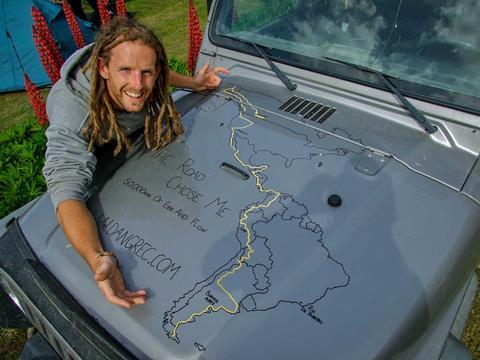

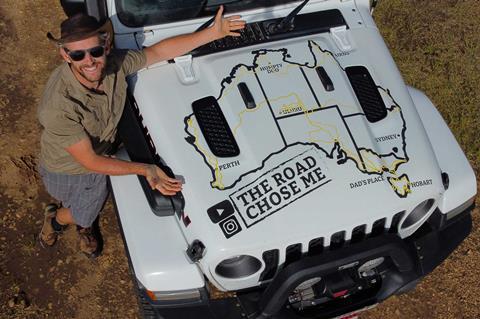
Per month or Per Mile
When creating a budget for an expedition like driving the Pan American Highway from Alaska to Argentina, thinking in terms of dollars per month is very helpful, but it doesn’t tell the whole story. Thinking in terms of dollars per month doesn’t take into account how fast we each choose to travel, so it lacks some nuance.
Obviously if we race from Alaska to Argentina in just a couple of months, our spending when viewed per month will be huge. Because fuel is by far the biggest expense on a major expedition, the distance we choose to drive each day actually has the biggest impact on our budget. The less you choose to drive each month, the less you will spend each month.
Because of this, Instead of viewing spending in terms of dollars per month, some people prefer to think in terms of dollars spent per mile, which more accurately brings travel speed into the equation.
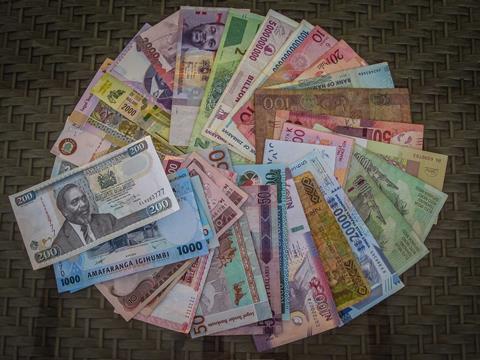
Strangely enough, most overlanders on the road for months or years find they spend right around $1 per mile, which tracks very closely to my final spending of $27,300 to cover the 30,000 miles to Ushuaia, or around ninety cents per mile.
During my African expedition I covered 54,000 miles in three years, spending an average of $1,650 per month. When all is said and done, the final price tag of $60,000 means I spent $1.10 per mile, which fits my expectations - Africa is more expensive to travel than Latin America.
Thinking in terms of dollars per mile can also help plan your trip, and make it crystal clear that slowing down to enjoy the trip does not mean you will spend more money. You can spend $30,000 in a few months to rush to Argentina without having time to see or do much other than drive. On the other hand, if you choose to slow down to the pace of local life, you can spend the same $30,000 to have a year and a half of enormous adventure.

Personally, I would much rather stretch my savings to cover eighteen months of enormous adventures.
Less Than Expected
While people assume a continent-scale expedition costs a lifetime of savings, the simple truth is that every year hundreds and hundreds of ordinary people drive the length of the Pan-American Highway for about the same amount it costs to go to work everyday in any North American city.
At the end of my Pan-American Adventure I tallied my finances and was utterly stunned to realize the $1,250 per month I spent on the road was identical to what I had been spending prior to leaving.
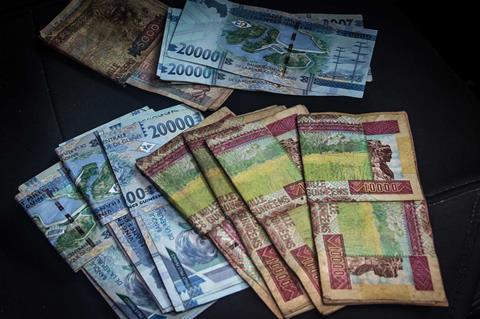
The cost of living and going into work for forty hours a week adds up quickly, even when you only include basics like rent in a share house, car insurance, gas, food, gym membership and a few city activities like going out with friends and the odd restaurant dinner.
Believe it or not, going to work every day cost exactly the same as living my dreams of adventure and driving from one end of the earth to the other.
Adventure Awaits
When I tell stories of driving the Pan-American Highway, roaming Africa for years and lapping Australia, people immediately assume I’m filthy rich, and that I must be a trust fund baby. What they don’t realize is that it’s not only possible, but commonplace for regular folk to scrimp and save, quit their jobs and then spend eighteen months driving to Tierra Del Fuego for something around $30,000 all-in.
While $30,000 is not insignificant, it’s ten times less than most people assume an adventure of that size costs, and is doable if you’re willing to make some sacrifices in your everyday life for a few years so you can have years of adventure on the road.

Do you really need a new phone, bigger TV or to eat at a fancy restaurant? If you can go without those luxuries and slam every extra dollar in your savings account, you’ll be surprised at the scale of adventures you will be able to afford.
Next time you find yourself dreaming of African savanna or snow capped peaks in Patagonia, checkin with your priorities.
Would you rather make payments on a new vehicle, or put that money into a savings account so you can turn those daydreams into reality?
I know exactly which one I’m choosing.

Dan’s 4 Tips To Spend Less On The Road
- Buy basic ingredients from local street markets and cook your own food as much as possible. I try hard to cook my own breakfast and dinner, and allow myself to buy cheap local street food for lunch so I can experience local cultures.
- Camping each night is by far the best way to save money, and wild camping for free whenever possible and safe makes an enormous difference. iOverlander is a great resource to see where others have been wild camping in the area.
- Slow down. Fuel consumption goes up dramatically at higher speeds, so I try to travel at 40 or 50 mph to use less fuel to cover the same distance. I remind myself I’m there to enjoy the surroundings, not just whip by as fast as possible.
- Fuel is by far the biggest expense, so driving a vehicle that gets 20mpg will save many thousands of dollars compared to 15mpg.

Join adventurer Dan Grec on his expeditions around the world on YouTube and Instagram @TheRoadChoseMe.
Access More Great Stories!
This article originally appeared in OVR Issue 05. For more informative articles like this, consider subscribing to OVR Magazine in print or digital versions here. You can also find the print edition of OVR at your local newsstand by using our Magazine Finder.



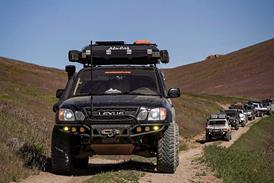




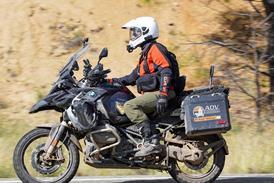












No comments yet